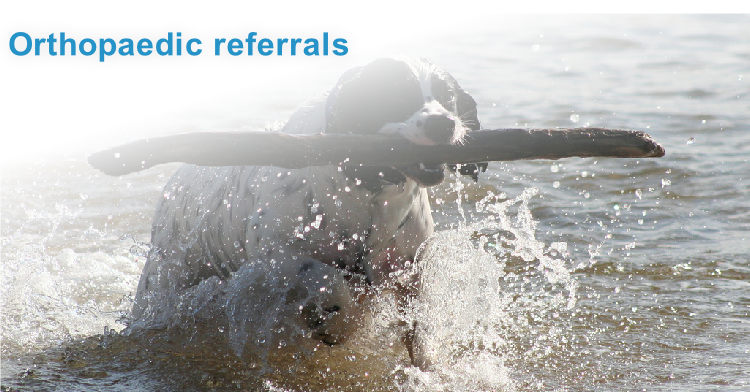

Meniscial injury in dogs can be associated with cranial cruciate ligament rupture in the stifle (knee) joint.
Incidence of meniscal tears is at least 30-40% in association with Cranial Cruciate ligament (CCL) tears and is more common in chronic CCL lesions, hence tears are more likely to occur with “cruciate disease”
The menisci are c-shaped fibrocartilages that sit between the femoral and tibial condyles. They play an important role in stifle stability, load distribution and lubrication. They are triangular in cross section. The inner two-thirds of the menisci are avascular, which contributes to poor healing when they are damaged. Short ligaments attach the medial meniscus to the tibia caudally and cranially. The medial meniscus also has a peripheral attachment to the medial collateral ligament. The lateral meniscus differs in that there is no peripheral attachment to the adjacent collateral ligament, and caudally it attaches to the femur. The menisci are loosely attached to each other by the cranial intermeniscal ligament, which lies over the insertion of the cranial cruciate ligament
Cranial Tibial Thrust.
The tibial plateau is not perpendicular to the line between the centre of motion of the hock and stifle. Therefore, on weight bearing, the femoral and tibial articular surfaces are not only compressed together, but an additional cranially directed force is generated (the femoral condyles effectively want to ‘roll down’ the tibial plateau). This force is known as Cranial Tibial Thrust. It is therefore an internally generated force that is resisted by the cranial cruciate ligament, the caudal pole of the medial meniscus and the caudal thigh muscles.
Specialist Veterinary Arthroscopy equipment
Stryker 3 chip camera
and console
Dynonics 1.9mm, 2.4mm & 2.7mm arthroscopes
Stryker xenon light source
Styker TPS & Shaver
Arthrocare bipolar / RF coblation
3M arthroscopy pump
Shutt arthroscopic forceps
Stryker SDC 2 image recorder
Meniscial injuries in dogs

For more on orthopaedic topics select from the drop down box below:

| elbow arthroscopy key hole surgery dog ireland |
| elbow dysplasia |
| vet-arthroscopy-shoulder ocd-dog |
| shoulder arthroscopy dog- ligament injury |
| stifle arthroscopy dogs |
| hip arthroscopy dog |
| spinal xray myelogram |
| GSDA A stamp |
| elbow score |
| hip score |
| hip score guide for owners |
| directions |
| site map |